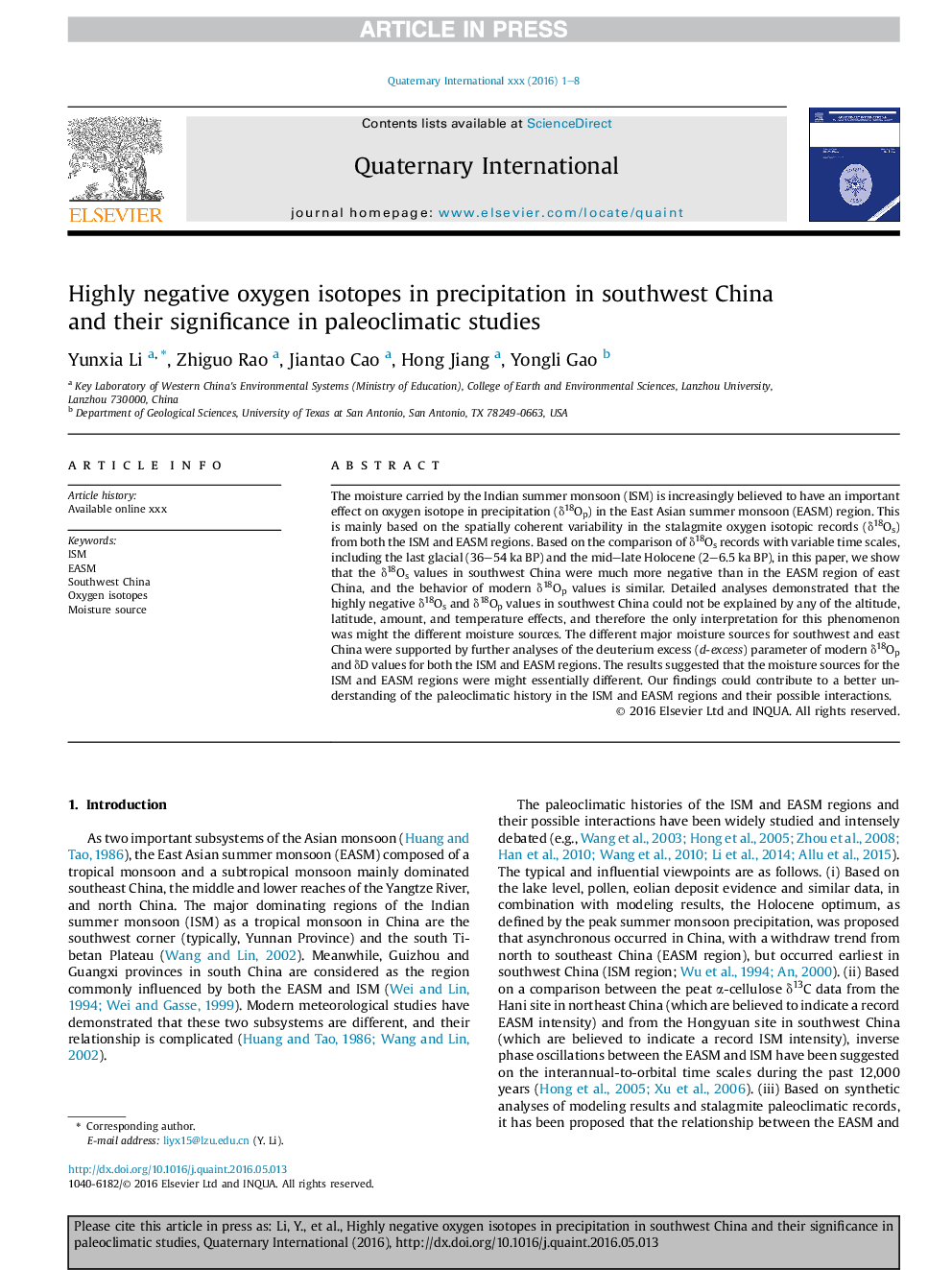| Article ID | Journal | Published Year | Pages | File Type |
|---|---|---|---|---|
| 5113310 | Quaternary International | 2017 | 8 Pages |
Abstract
The moisture carried by the Indian summer monsoon (ISM) is increasingly believed to have an important effect on oxygen isotope in precipitation (δ18Op) in the East Asian summer monsoon (EASM) region. This is mainly based on the spatially coherent variability in the stalagmite oxygen isotopic records (δ18Os) from both the ISM and EASM regions. Based on the comparison of δ18Os records with variable time scales, including the last glacial (36-54 ka BP) and the mid-late Holocene (2-6.5 ka BP), in this paper, we show that the δ18Os values in southwest China were much more negative than in the EASM region of east China, and the behavior of modern δ18Op values is similar. Detailed analyses demonstrated that the highly negative δ18Os and δ18Op values in southwest China could not be explained by any of the altitude, latitude, amount, and temperature effects, and therefore the only interpretation for this phenomenon was might the different moisture sources. The different major moisture sources for southwest and east China were supported by further analyses of the deuterium excess (d-excess) parameter of modern δ18Op and δD values for both the ISM and EASM regions. The results suggested that the moisture sources for the ISM and EASM regions were might essentially different. Our findings could contribute to a better understanding of the paleoclimatic history in the ISM and EASM regions and their possible interactions.
Related Topics
Physical Sciences and Engineering
Earth and Planetary Sciences
Geology
Authors
Yunxia Li, Zhiguo Rao, Jiantao Cao, Hong Jiang, Yongli Gao,
